
Are you wanting to host a gathering to rally people together to help clean our coastlines? I’m here to share the step by step process to planning and hosting a zero waste beach clean up!
The oceans are home to approximately 70% of life on earth and produce more than half of the oxygen on earth. Mind blowing, right? I recently watched the Netflix documentary, Mission Blue, which I highly recommend for anyone wanting to understand the incredible complexity of the ocean’s ecosystem. Our oceans are such a gift – I am reminded of that every single day. Sadly, plastics continue to be one of the main threats to aquatic life. If we don’t realize that our trash never really goes “away” and don’t closely examine our waste streams, we will destroy the ocean before the next generation ever sees its majesty.
While these statistics can be overwhelming, it is important to mobilize and do our part, no matter how small. Every action matters.
This guide is meant to help both individuals planning a small gathering and businesses or organizations that are looking to implement a zero-waste strategy to their larger scale beach clean ups. I’ve had the honor of laying the zero-waste foundation for national beach clean-ups with large organizations, such as REN Skincare, and I am honored as I continue to see my zero-waste initiatives be carried out in beach clean ups spanning many coastlines.
Beach clean ups are a wonderful opportunity for education and to activate people who are interested in caring for our earth but not quite sure where to start. There is a whole section towards the bottom of this post with ways to make sure your beach clean up is impactful far beyond just debris removal!
Whether you’re gathering a small group of family and friends, or a large group of volunteers ready to help, I think you will find this guide will give you things to consider and ways to increase your impact.

Step One – PLAN:
Where to Host A Zero-Waste Beach Clean Up
Identify beaches or waterways in your area that need some cleaning, that are safe and accessible. When choosing your location, consider these different factors:
- Which beach is in need of a clean up where you can really make impact?
- How easy is this beach to get to? Is there parking?
- If it’s a bit more remote – do you have a plan to make it accessible?
Call local city government/parks agency to see if permission is required.
Visit the site in advance of the cleanup date to determine:
- Where to set up a check-in station
- Where to leave the collected waste and recyclables
- What areas volunteers will clean
When to Host A Zero-Waste Beach Clean Up
Keep in mind who you are inviting and when they’ll have availability. Weekends are awesome but weekdays can work well too for beach clean ups depending on your community’s schedule.
Plan for beginning of low tide so you give yourself the most amount of time.
Here in Hawai’i it gets very hot during the peak hours of the day so I typically try to shoot for morning beach clean ups, but late afternoon could be lovely as well. You could plan to have volunteers hang out after the clean up and enjoy the sunset with some zero-waste cocktails.
Who to Include in a Zero-Waste Beach Clean Up
Encourage friends, family and colleagues to get involved and help organize the cleanup with you. Share with your community online and offline. Spread the word and think of easy ways to also have your network spread the word for you.
Also, consider teaming up with a local organization such as Surfrider Foundation or Sustainable Coastlines to help host your beach clean up. These types of organizations are a wealth of knowledge and can help facilitate many things we might not think about!
Try to get a gauge on how many attendees you are expecting so you can plan accordingly for materials. Meetup ahead of time with other dedicated volunteers to plan the event and assign roles.
Supplies for a Zero-Waste Beach Clean Up
Here are some things to consider when you’re gathering supplies:
- Feed Sacks or Reusable Buckets instead of plastic trash bags
- Reusable Gardening Gloves (or ask volunteers bring a pair of gloves with them)
- Water cooler with enough water to keep volunteers properly hydrated, especially in warm temperatures (remind volunteers to bring their own cup/bottle!)
- First-aid kit for minor cuts and scrapes
Depending on weather, reef-safe sunscreenand bug repellant may be needed. - Sign-in sheet to record the number of participants and enable you to contact them later with thanks and photos (better yet, have a spread sheet on an ipad that people can electronically enter!)
- A luggage scale (a scale with a hook) to weigh the trash you collect.
If this is a corporate event, consider these for branded items to give to your volunteers:
- High quality, reusable water bottles
- Organic canvas tote bags
- Recycled/repurposed t-shirts
- Reef safe sunscreen
Avoid any junk that’s cheaply made and might be thrown away and also sample-sized items packaged in plastic. Invest more in the experience itself that you’re welcoming people into and avoid wasteful ‘obligations’ like giving away unnecessary gear!
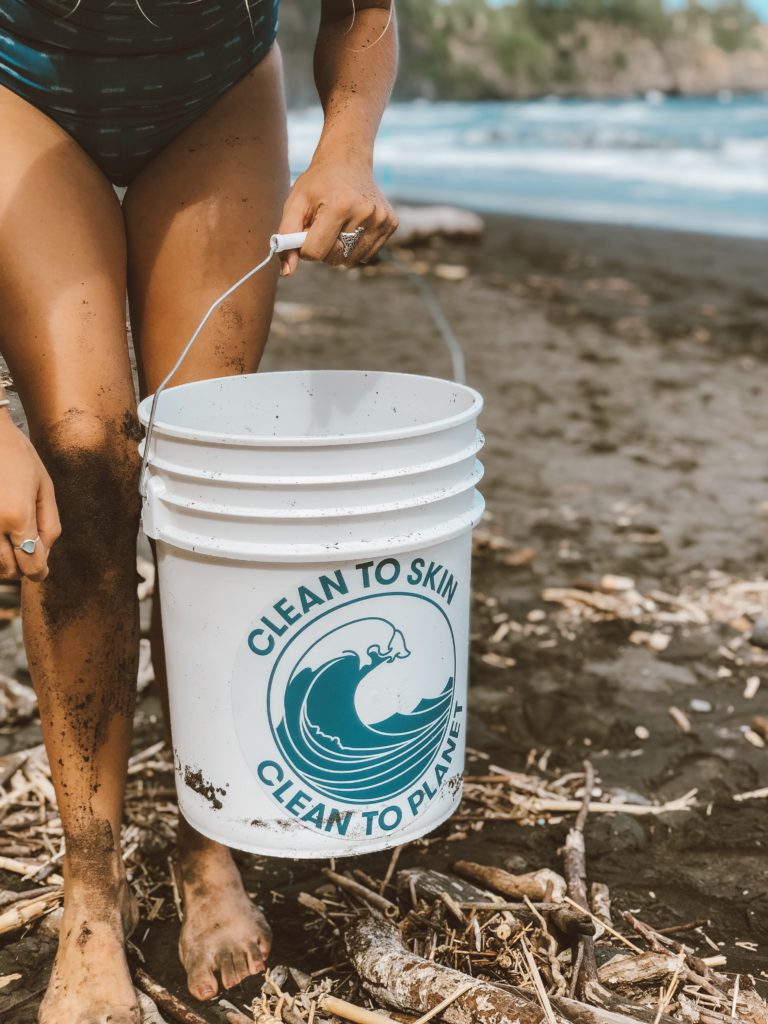
Plan Ahead to Avoid Waste at Your Event
Food
Providing a meal at your cleanup is awesome for those hungry volunteers but can be tricky when you’re trying to reduce waste!
Use these tips to cut down on packaging, single-use plastics and food waste:
If you’re going to provide food or snacks, buy local, healthy snacks, such as fruit, that doesn’t require packaging! Opt for locally grown fruit or handmade snacks from a sustainable catering company.
Think finger food—sandwiches, veggies, hummus, granola bars, fruit— that can be eaten without cutlery. Consider making it a potluck, if it’s a more intimate group.
It may be best to purchase inexpensive, but reusable, plates and silverware that you wash in between events if you host events regularly.
If you’re going to source food from a restaurant or catering company, make sure to speak with them beforehand about your choice to minimize waste. Local, ocean-friendly small-businesses and restaurants are recommended!
Offer any leftover food for the volunteers to take home or donate the leftover food to a local soup kitchen (locate one beforehand and communicate about what they can accept!).
If you’re going to provide coffee, alert your volunteers to BYOC (bring your own cup) and let them know you won’t be providing single-use cups, plastic lids or stirrers.
Water
Volunteers must have water at cleanups, but it doesn’t have to be from disposable, plastic bottles!
Avoid single-use plastics with these tactics:
Provide a container of water at the event and encourage volunteers to bring reusable water bottles. If this is a corporate event and you’re giving those out, let volunteers know that before hand.
Purchase, borrow, or rent reusable water solutions to avoid using single-use plastic water bottles – many non-profit organizations or schools have large water coolers that would be great. Pack reusable or compostable cups as well for those who forget reusable water bottles.
Transportation
Reduce the impact from transportation to the event with recommendations to volunteers. Suggest that volunteers walk, bike, use public transport, or carpool to the event.
Deposit Bins
Come up with a plan to dispose of the trash and recyclables you collect properly.
Make sure to label bins with explanations of what items can go where – “Compost,” “Recycling” and “Landfill.” You can sort the debris you collect and any waste generated during the event. This is a great educational moment for volunteers!
Recycle: Be aware of what items your local recycling receptacle accepts and be sure to sort any items collected or used during the event to be recycled. This may include plastic, metal, or glass items.
Compost: Perhaps a volunteer has a compost bin at home or your municipality has a compost system in place. Collect organic materials such as food scraps and paper in this bin to be used in the future (if organics are left in landfills, it can interact with waste and generate immediate combustion of methane, a greenhouse gas over 100x more damaging than carbon dioxide).
Liquids: Sort out liquids so they don’t get sent to landfills (Find a disposal site near you)
Potentially hazardous materials: Check with your local municipality to see what can be done with batteries, electronics, tires and even paint.
Landfill: Any items that are not recycled, composted or disposed of in another way should be sent to the landfill.
Ensure all trash is left in the designated drop-off location and that no materials are left behind as you leave the cleanup location.
Keep These Safety Tips in Mind for a Zero-Waste Beach Clean Up
Review what to do in case of a health emergency (heat exhaustion or heatstroke, broken bone, etc.) and find out whether any of your volunteers have medical training or know basic first aid.
When visiting the site, look for natural and man-made safety hazards, such as rocky areas, highly variable tides, poisonous plants, high-speed roads, power lines, etc. If necessary, inform your volunteers that they may need to dress accordingly, such as wearing long pants or closed-toed shoes. (No one ever wants to think about something going wrong, but it’s good to be on the safe side by adapting the wording for your organization’s waiver using this form. Remind all volunteers to be safe and mindful.)
Plan ahead for handling sharp items, such as syringes or pieces of broken glass. We recommend disposing of these items in a wide-mouth container with a tight screw lid, such as an empty liquid laundry detergent bottle that you have clearly labeled.
Find out how to contact your local Fish and Wildlife Service office in case you encounter any dead, entangled or injured wildlife. Be sure to leave any wildlife handling to the experts.

Step Two – PROMOTE:
- Create branded collateral for everyone to share on IG stories, social media posts, etc. Be sure to post on Instagram, Facebook + Twitter.
- Send invite to friends + ask them to share on IG stories
- Contact local radio station to schedule a promotion
- Share with environmentalist networks, on community calendar, NPR + big island events calendar
- Create a Facebook event so interested volunteers can RSVP and you can easily communicate with attendees.
- Spread the word through email, social media and e-invites.
- Now this isn’t ZERO waste although it is biodegradable – our community in Kona is HUGE on bulletin boards and it’s a great way to connect with a wider demographic of people so for our clean up, we chose to print 25 half page paper flyers and place them on local bulletins.
- Use this form on the Ocean Conservancy’s website to list your cleanup on their site and increase your outreach.
Sample Event Description:
“Come gather for a much needed beach clean up and learning opportunity! We strongly believe that no matter where we live, our ocean and waterways support and improve our lives. Today, plastic has been found in the deepest depths of the ocean, in the bellies of 62% of all seabirds and in 100% of sea turtle species. Sadly, marine debris and micro-plastics are showing up on coastlines all over the world. That’s why we’re hosting a beach cleaning gathering to help keep our ocean and waterways clean of these harmful waste and to share knowledge and education for how we can reduce the waste we create so that it stops ending up in our waterways.
I’d love to have you to join us! Meet us at [location] on [date and time], where we can get together and work toward a common goal. It’s going to be a magical morning with [i.e. coffee, food] and conversation and we would LOVE if you could come. Feel free to bring your friends and family!
Even if you aren’t available that morning, please share this invite on your Instagram story, letting our community know about this event. Let me know if you can make it! I would love your support and energy there!”
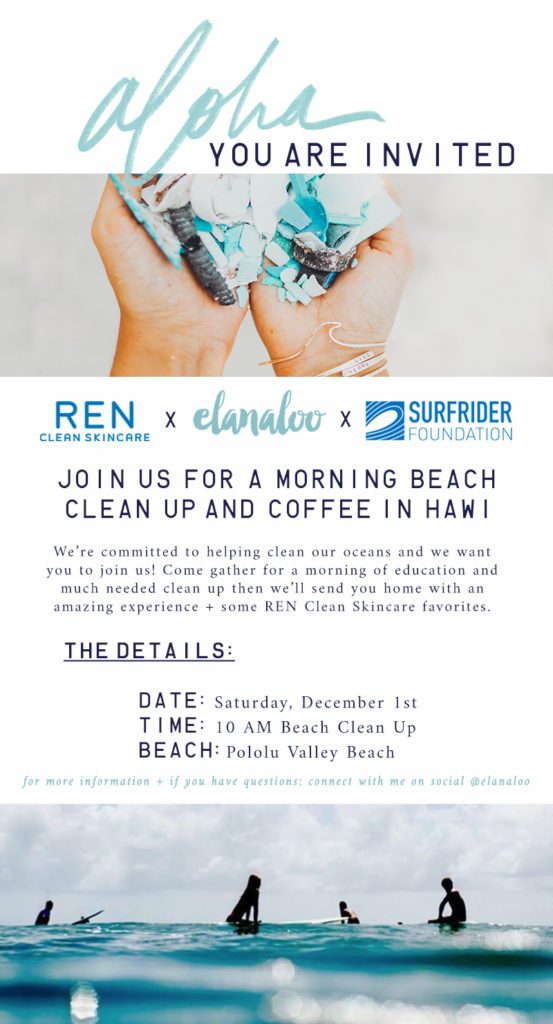
Step Three – HOST THE CLEAN UP:
Set Up
Arrive early to set up, post signs and designate your trash drop-off site. At your check-in station, ensure you have pens, pencils and sign-in sheets ready for your volunteers. Or if you have this opportunity, potentially have volunteers check in on an iPad or tablet to cut down on paper!
What to Tell Volunteers
Emphasize the importance of observation and data collection. Awareness begins by taking observation of what types of debris is present – household items like hangers, toothbrushes and pieces of bottles (caps, handles, etc) are common on our beaches as are materials from commercial fishing. This valuable information is used to create a snapshot of the global ocean trash problem and influence long-term solutions.
Explain to volunteers what to do if they encounter any hazardous items, such as sharp objects or dead, entangled, or injured animals. Remind them of any local safety hazards, such as power lines or poison ivy.
Tell volunteers what to do with the filled buckets/feed sacks of trash and set a meeting time for the end of the cleanup so that everyone returns at the same time. Kids should always have adult supervision.
Document and Share The Cleanup
Take before and after photos of the cleanup site as well as shots of your volunteers in action and a final group picture with all of the trash collected. Share any images you take with your volunteers and online. By sharing this information with your communities online furthers the entire purpose of the beach clean up – AWARENESS.
If you have a scale with a hook, use it to weigh the trash you’ve collected. If you don’t have a scale, you can use a standard conversion of 50 pounds per feed sack to estimate the overall weight of your collected trash. Share this information with the photos you take! Here’s an example:
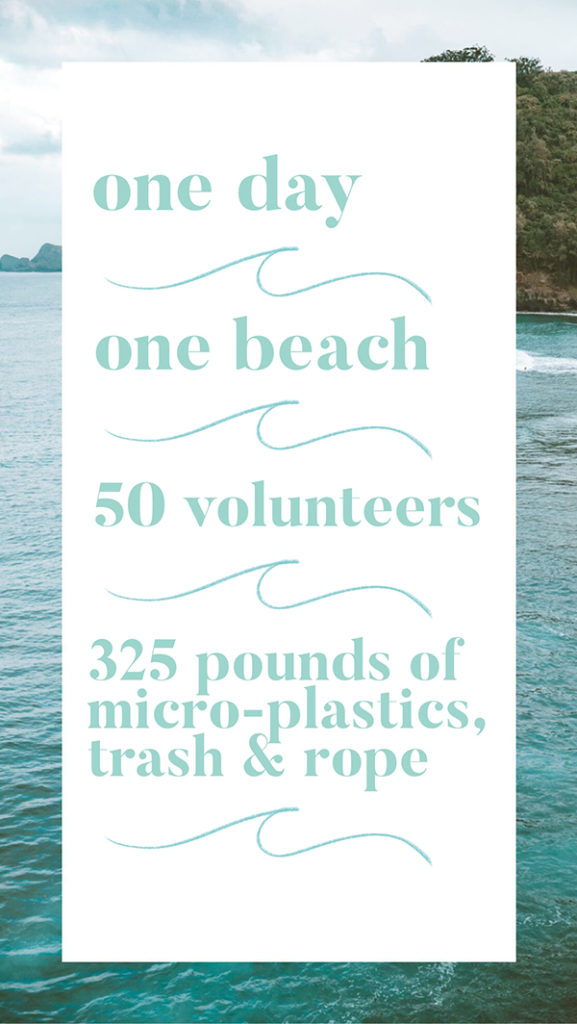
Use This Time For Awareness + Education
Use your beach clean up as a vehicle for education. Take some time at the end of the clean up – I schedule about an hour – to allow for connection and conversation between the volunteers and spread awareness about the bigger picture of ocean pollution.
It’s so vital to share with people who are already invested in helping what plastic pollution looks like globally and steps to consider AFTER leaving the beach clean up. It doesn’t need to be formal but take the time to unite everyone before they leave, thank them for coming, share some information.
Here are some things you could share:
By 2050 there could be more plastic than fish in the ocean. Yet the problems start long before plastic reaches our oceans, rivers and beaches, and so must the solutions.
We must eliminate the plastic we don’t need – the throwaway straws, cutlery and cups; unnecessary packaging and items that can be replaced with better alternatives.
Pollution is a direct result of failed design. We must innovate reengineer the products we use so all the plastic we do need is designed to be safely reused, recycled, or composted. And we must circulate everything we use, making sure the materials we produce stay in the economy and never becomes waste or pollution.
Empower your volunteers with SOLUTIONS, not just these heavy stats. Offer up swaps they can make in their lives whether they are an individual or a business owner. Offer insight into the power of their choices and ask for their input as well – many might have insight in different areas that they can give the group. Share about bills being passed on the local or national level that they can support to help further protect our oceans.
Use this time to further the ripple effect and continue the impact far beyond the beach clean up.

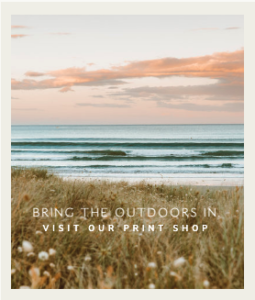


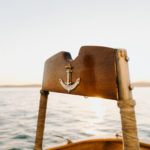







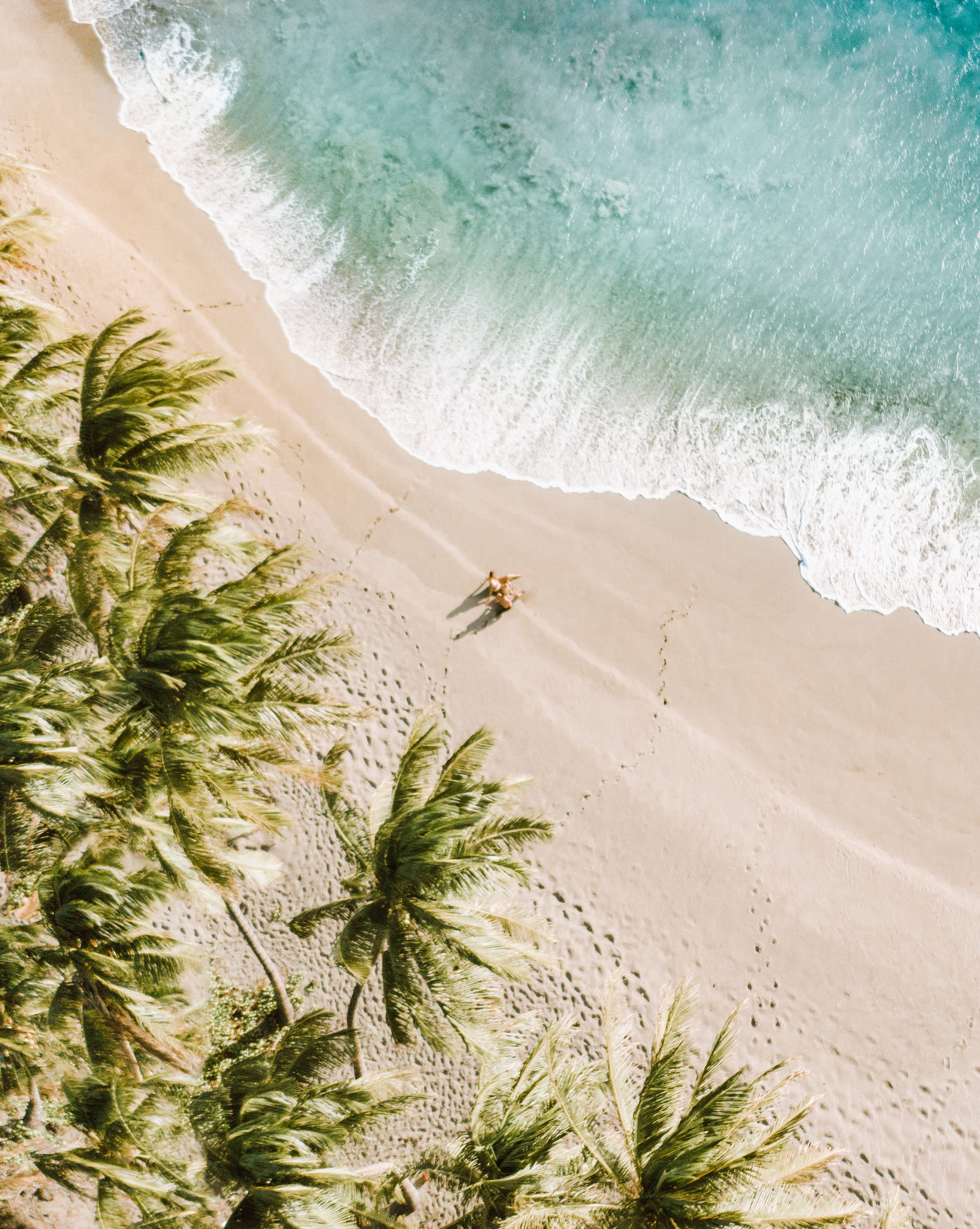
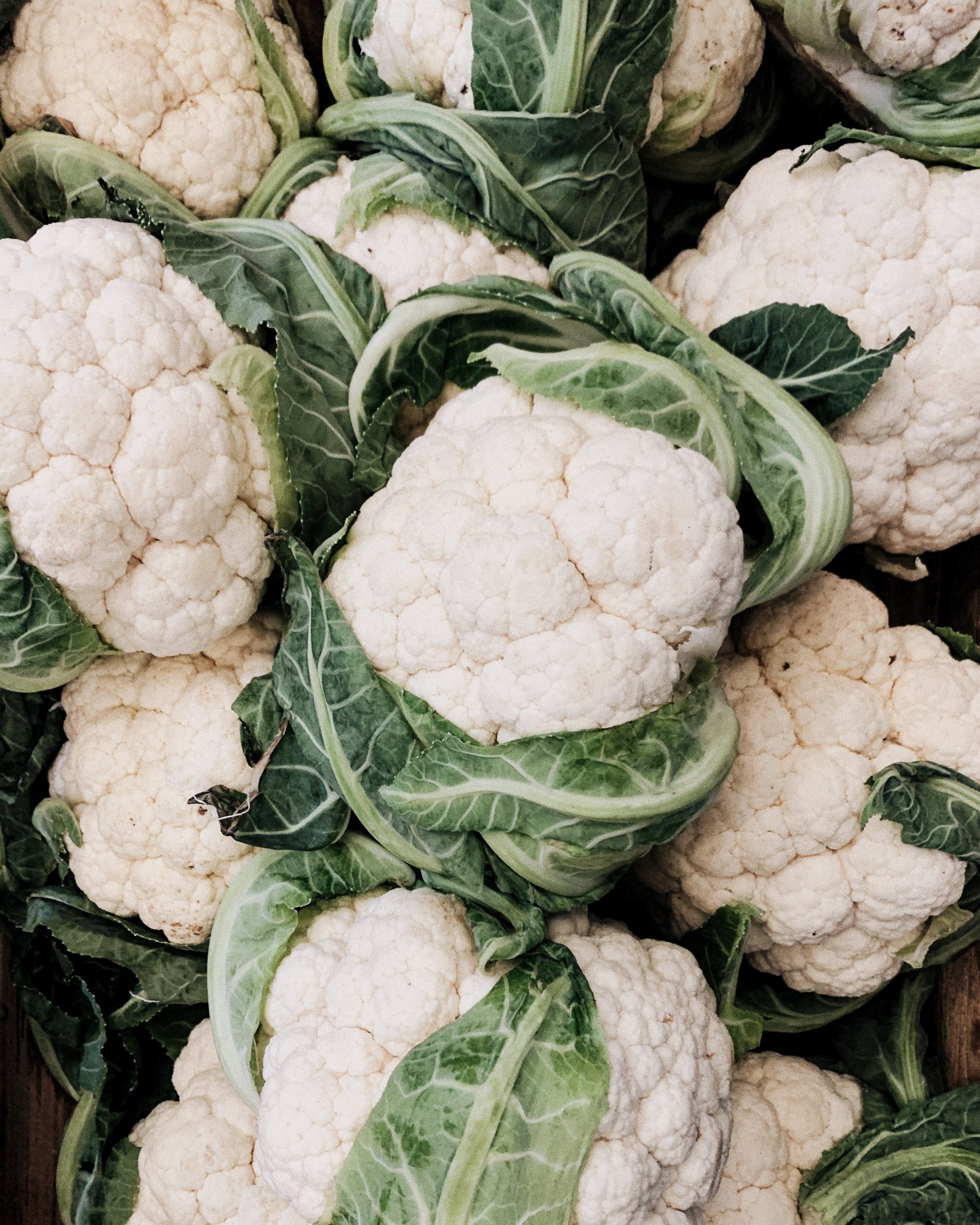
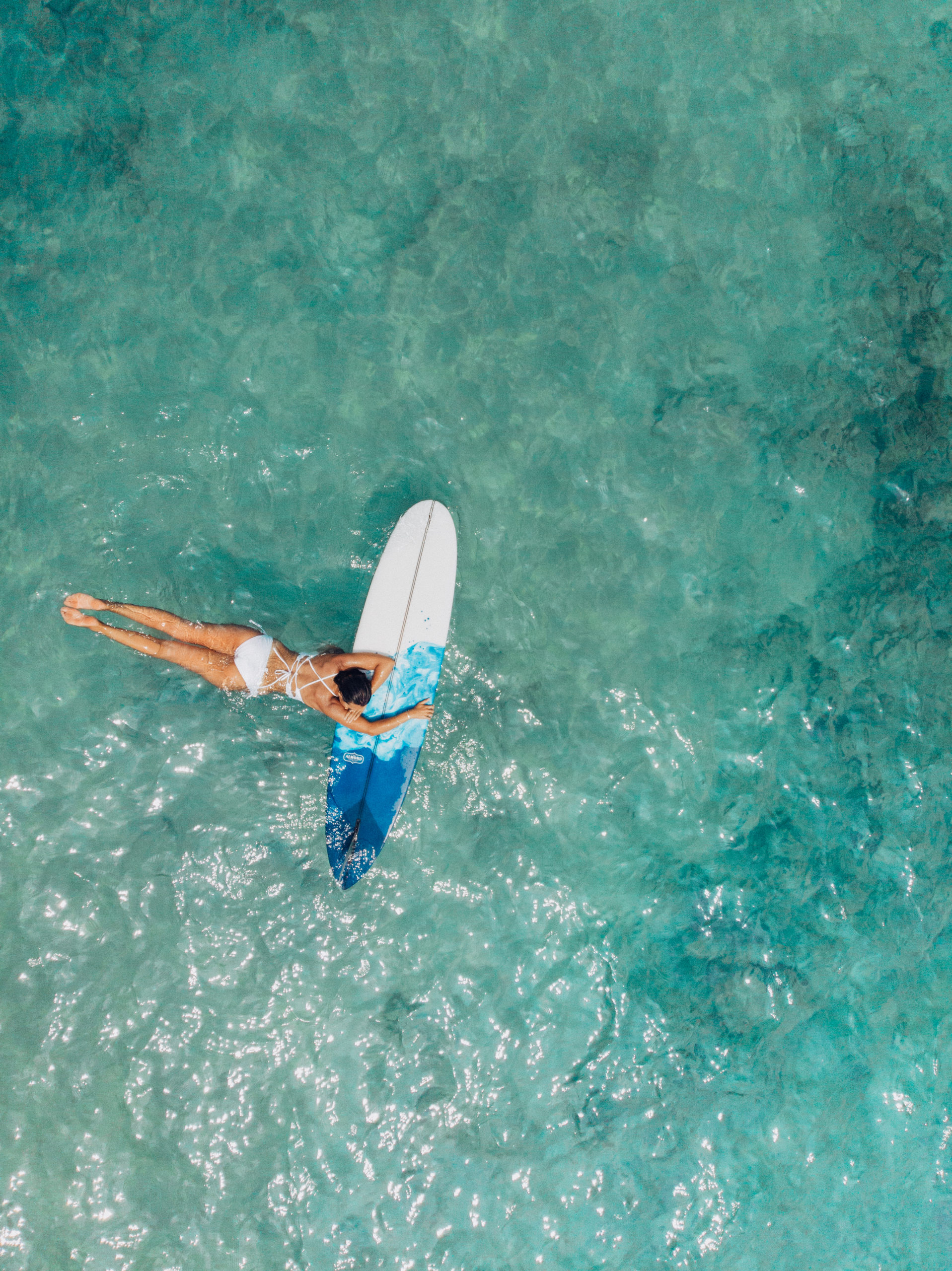





Read the Comments +
add A comment